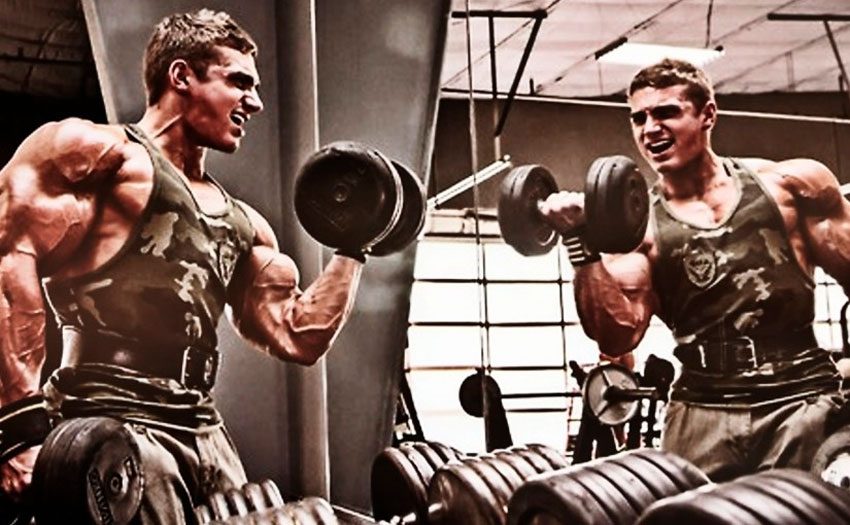The desire to gain a beautiful and relief body encourages a person to engage in strength training, but progress in classes is noticeable for everyone in different ways. For some, it is enough to visit the gym twice or three times a week to achieve excellent results. Others calmly go to the gym every day and look and feel great, even though most sources say muscles need time to recover. And if you want to achieve your goals in a short time, the question of the relevance of daily training comes to the fore.
How long does it take for the body to recover?
The human body needs to rest. Otherwise, a state of overtraining will come, when even the most ideally selected training program will not bring results. The minimum recovery period is 24 hours. Twenty-four hours after training, the body becomes completely ready for the next lesson.
This condition does not apply to everyone, but only affects the following groups of people:
- beginners, that is, those who who have recently started training;
- older athletes who are already fifty years of age or older;
- amateurs who do not plan to achieve any serious sports goals.
The day between two workouts is necessary for the body to regenerate, develop enzymes, develop new muscle fibers, and gain enough energy.
The maximum time a person can devote to exercising on simulators without rest is three days. Such a regime without interruption is only suitable for:
- actively pumping up the muscles of the arms, legs, back;
- professional athletes working with large weights.
Do not take these recommendations as absolute true. The body of each person is individual, so a specific recovery period is determined together with experienced coaches and mentors, but when it comes to self-study, advice should not be neglected.
Frequency of training for each muscle group

Increasing the volume and definition of the muscles is a goal that is achieved only with a regular and continuous training cycle. Long breaks minimize the effort involved, so rest breaks should be determined on a case-by-case basis. This does not mean that you can simply choose a certain time yourself, since there are rules that cannot be ignored.
The larger the muscle group, the longer it takes to recover, since it requires much more work and load. Therefore, workouts that combine small and large muscle groups are wrong. You cannot, for example, pump your legs with biceps and shoulders at the same time. This is due to the size of the former.
The legs account for about fifty percent of the total muscle mass of the whole body. And if you combine the training of the lower extremities with other groups, this will not bring efficiency, since it will not be possible to work out either small or large muscles, since the load exerted will not be enough for pumping in both directions. A large muscle group like the legs should be given a separate training day. In addition, it should be borne in mind that they will need much more rest than the muscles of the arms.
Small muscle groups, which include the shoulder girdle, biceps, triceps and others, recover faster, so they can be trained more often. The shoulders, for example, are involved in pumping the pectoral muscles, which in no way contradicts the principle of correct recovery after training.
How much rest should beginners need?

People who are just starting to exercise may have less rest for their more experienced gym mates. This is due to the training program itself. Experienced bodybuilders take large weights, perform complicated exercise variations, therefore, the load on the muscles is much greater.
Beginners do not use their muscles with such a return, because they simply cannot withstand such a pace. The lack of maximum loads allows them to spend much less time resting, but only until they become experienced bodybuilders. Those who came to the gym recently after pumping large muscles can recover from 1.5 to 2 days, and experienced ones – from 48 to 72 hours.
Training plan
If you are going to become the owner of a beautiful relief body, you must have a clear training scheme and follow this program.
Pumping a specific muscle group every seven days
May look like this:
- Monday – chest;
- Tuesday – back;
- Wednesday – rest;
- Thursday – legs;
- Friday – shoulders.
On Saturday and Sunday they have a rest. Thus, it turns out that during the week only one large muscle is worked out, and then it is restored over the next week. The main thing is that on each day the specific muscles are loaded.
The load on the muscle should be maximum. Otherwise, the training day will be wasted, and this will slow down the development of pumping. You can’t strain too much. You need to maintain a good balance in order to be fully restored and full of strength until the next class.
Core boost
Carried out three times a week – Monday, Wednesday, Friday. The entire torso is loaded. The rest of the days are devoted to rest. This training scheme creates a good load, but no stress. With a three-time training scheme for the entire torso, you should do from 3 to 4 sets for each muscle group in one session. In other words, the total number of sets is 9-12.
Two-day workout per week

On Monday and Thursday, the upper torso is pumped, and on Tuesday and Friday, the lower torso is pumped. Wednesday, Saturday, Sunday are days off.
It turns out that there is a separate training day for each muscle group. This is an intermediate option between the first and second training scheme, which allows you to avoid both excessive and low loads.
The number of approaches for each category of exercises varies from 5 to 6. The pace is chosen moderate, which allows you to maintain the frequency and volumes without any extremes. The total number of sets per week is 10-12.
